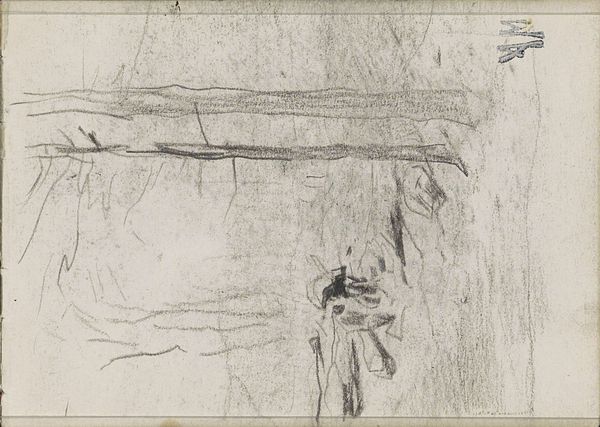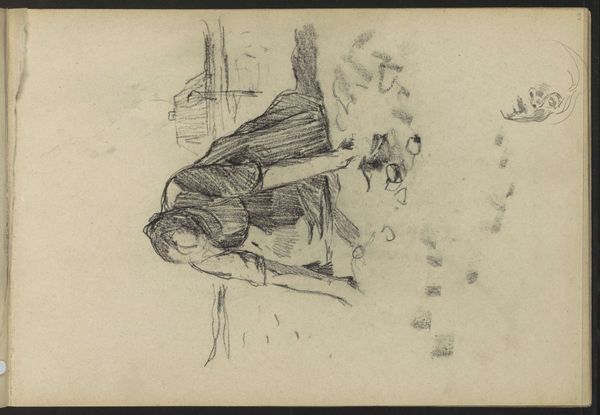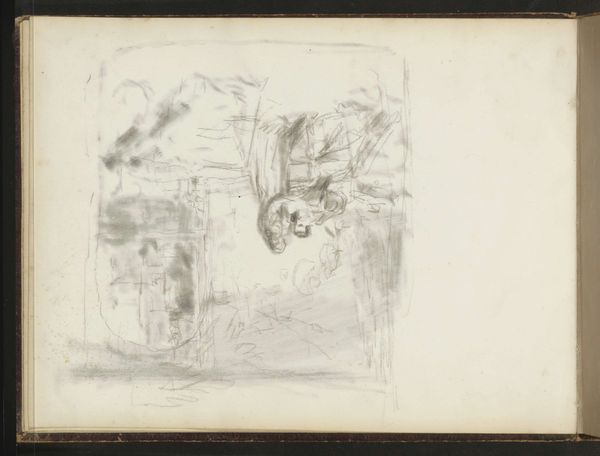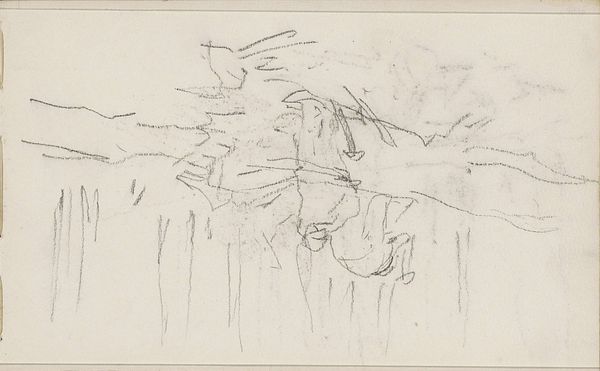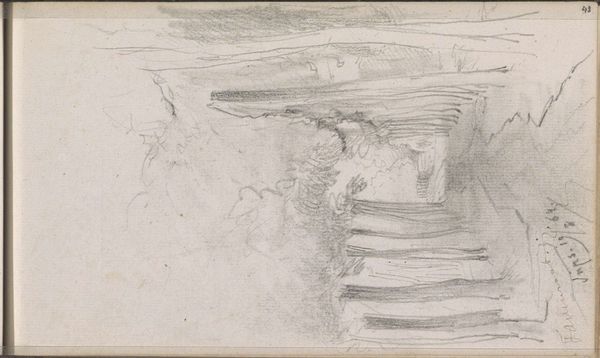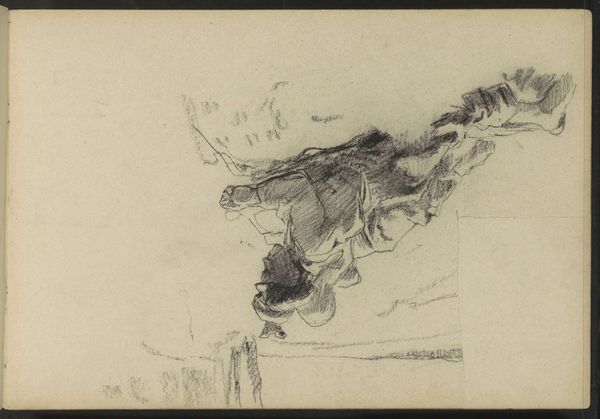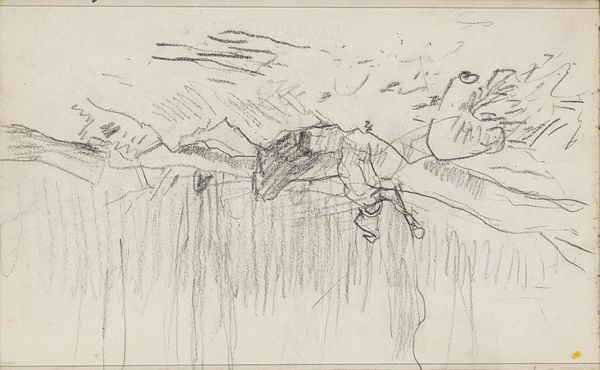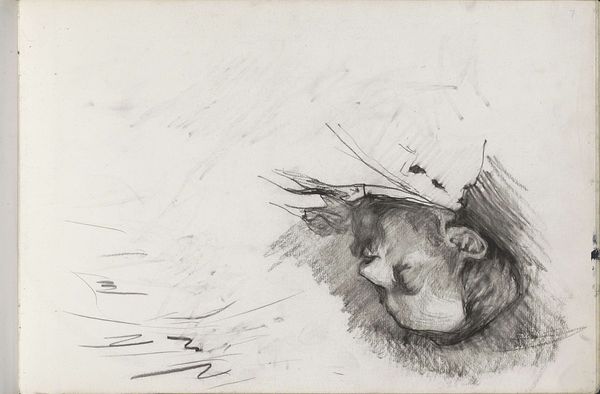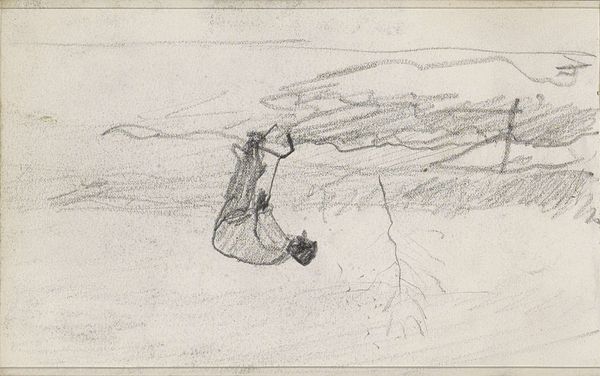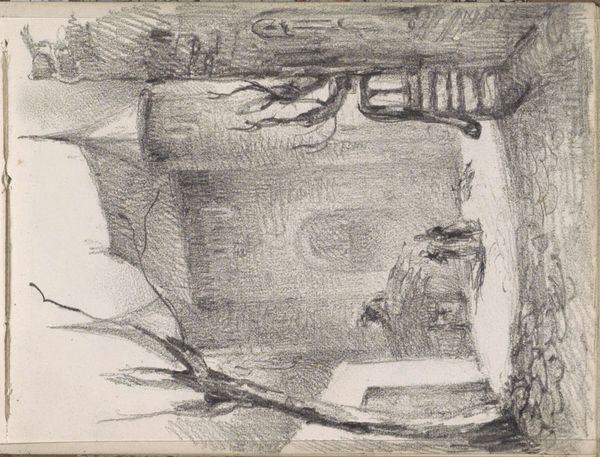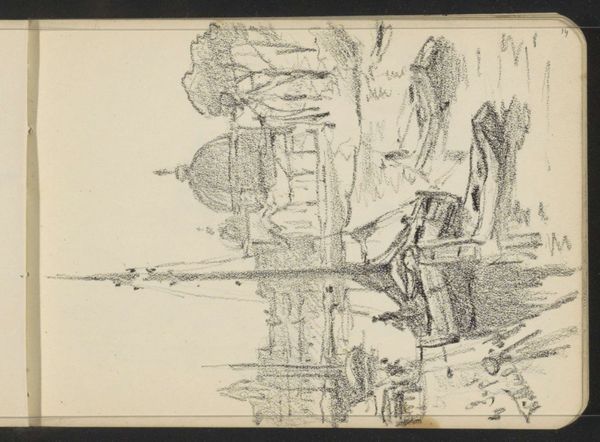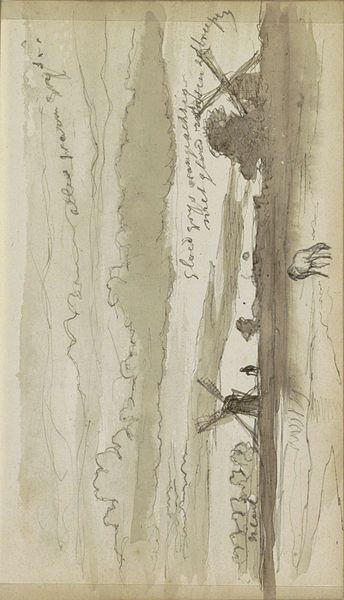
drawing, plein-air, paper, watercolor, ink
#
drawing
#
narrative-art
#
plein-air
#
landscape
#
paper
#
oil painting
#
watercolor
#
ink
#
romanticism
#
watercolour bleed
#
genre-painting
#
watercolor
Copyright: Rijks Museum: Open Domain
Curator: The artwork before us, created by Johannes Tavenraat in 1839, is titled "Man en vrouw met paard en wagen in een bos," or "Man and woman with horse and carriage in a forest." It's a drawing incorporating watercolor and ink on paper, and resides here at the Rijksmuseum. Editor: It's a fascinating piece. The forest seems to close in on the figures, creating this sense of claustrophobia or being watched. The monochromatic tones really amplify the mystery and a sort of unsettling quietness. Curator: Tavenraat was known for working en plein air, directly observing and capturing the landscape. Looking at the various applications of watercolor, ink and sketching on the left, you can almost see the process unfold - experiments with form, attempts to capture fleeting impressions before integrating figures as if into this tapestry. Editor: And that immediacy you mention provides a powerful juxtaposition to the era's societal constraints on women. I see a narrative of class and leisure but also a confinement; are they traveling for pleasure, or are they fleeing? This period saw immense changes in transportation and societal expectations... How are we to read their journey and the social dynamics at play in this snapshot of life from 1839? Curator: I'm especially intrigued by the tension between the artist's apparent intent to depict a conventional landscape and the final impression of raw materiality and spontaneous gesture that is clearly expressed throughout the page and in each attempt in the process of it. Editor: Yes! These aren't just materials used to paint a scene, it’s about how labor, movement, societal power structures, and perhaps, acts of subversion find expression on paper through those artistic choices. The work makes a social commentary simply by existing as this particular type of landscape in that time period. Curator: Exactly, that's precisely what makes his approach so unique: a landscape tradition intersected with contemporary culture—where ink, watercolor, paper, drawing, the artistic labor of representing place is both art object and document of artistic investigation. Editor: Looking at this, I find myself reflecting on how landscape, art and identity are deeply interwoven. It is clear from this drawing that these factors aren't only intertwined now in present times, they are rooted historically. Curator: An art historical window in so many ways, both literal and metaphorical! Editor: Definitely a perspective I'll be pondering long after this visit.
Comments
No comments
Be the first to comment and join the conversation on the ultimate creative platform.
